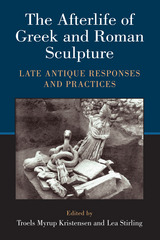
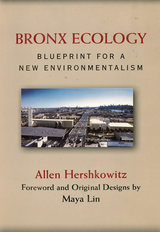
"The Bronx Community Paper Company teaches us that we have the power, if we muster the will, creativity, and cooperation, to recover lost pieces of America's environment, return them to good health, protect other lands and resources from being destroyed, and even create environmentally friendly jobs in the process." —President Bill Clinton
In 1991, frustrated by the failure of lawmakers to produce meaningful progress on environmental issues, Allen Hershkowitz, a scientist with the Natural Resources Defense Council (NRDC) opted for an innovative approach. Resolving to put market forces to work for the environment, Hershkowitz devised a plan to develop a world-scale recycled-paper mill on the site of an abandoned rail yard in the South Bronx.
Created in collaboration with colleagues at NRDC, the private sector, government, unions, and community groups, and with a building designed by renowned architect and designer Maya Lin, the Bronx Community Paper Company (BCPC) was intended to put the ideas of industrial ecology to work in a project that not only avoided exacerbating environmental problems but actually remediated them. One of the primary goals of the project was to show that environmental protection, job production, social assistance, economic development, and private-sector profitability can work together in a mutually supportive fashion.
Unfortunately, it didn't quite turn out like that.
In Bronx Ecology, Hershkowitz tells the story of the BCPC from its earliest inception to its final demise nearly ten years later. He describes the technical, economic, and competitive barriers that arose throughout the project as well as the decisive political and legal blows that doomed their efforts to secure financing, ultimately killing the project.
Interwoven with the BCPC tale is Hershkowitz's vision for a new, engaged environmentalism, complete with principles for a new era of industrial development that combines social and environmental responsibility with a firm commitment to profit-making. As Hershkowitz explains, while the project was never built, its groundbreaking collaboration can hardly be considered a failure. Rather the BCPC, in the words of veteran environmental journalis.
Philip Shabecoff, "can be seen as the beginning of a learning process for entrepreneurial environmentalism, a pathway to a new approach in the 21st century." Bronx Ecology offers a compelling vision of that exciting new pathway.
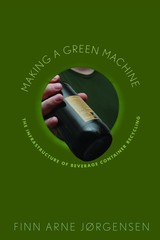
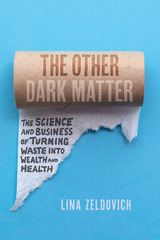
The average person produces about four hundred pounds of excrement a year. More than seven billion people live on this planet. Holy crap!
Because of the diseases it spreads, we have learned to distance ourselves from our waste, but the long line of engineering marvels we’ve created to do so—from Roman sewage systems and medieval latrines to the immense, computerized treatment plants we use today—has also done considerable damage to the earth’s ecology. Now scientists tell us: we’ve been wasting our waste. When recycled correctly, this resource, cheap and widely available, can be converted into a sustainable energy source, act as an organic fertilizer, provide effective medicinal therapy for antibiotic-resistant bacterial infection, and much more.
In clear and engaging prose that draws on her extensive research and interviews, Lina Zeldovich documents the massive redistribution of nutrients and sanitation inequities across the globe. She profiles the pioneers of poop upcycling, from startups in African villages to innovators in American cities that convert sewage into fertilizer, biogas, crude oil, and even life-saving medicine. She breaks taboos surrounding sewage disposal and shows how hygienic waste repurposing can help battle climate change, reduce acid rain, and eliminate toxic algal blooms. Ultimately, she implores us to use our innate organic power for the greater good. Don’t just sit there and let it go to waste.
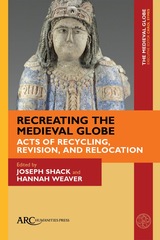
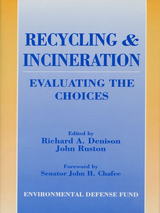
Recycling and Incineration presents information on the technology, economics, environmental concerns, and legal intricacies behind recycling and incineration programs.
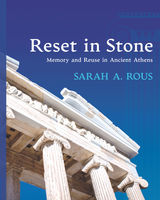
Sarah Rous develops the concept of upcycling to refer to this meaningful reclamation, the intentionality of reemploying each particular object for its specific new context. The upcycling approach drives innovative reinterpretations of diverse cases, including column drums built into fortification walls, recut inscriptions, monument renovations, and the wholesale relocation of buildings. Using archaeological, literary, and epigraphic evidence from more than eight centuries of Athenian history, Rous's investigation connects seemingly disparate instances of the reuse of building materials. She focuses on agency, offering an alternative to the traditional discourse on spolia. Reset in Stone illuminates a vital practice through which Athenians shaped social memory in the physical realm, literally building their past into their city.
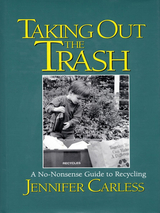
Taking Out the Trash is a practical and useful guide to how individuals, businesses, and communities can help alleviate America's garbage crisis.
READERS
Browse our collection.
PUBLISHERS
See BiblioVault's publisher services.
STUDENT SERVICES
Files for college accessibility offices.
UChicago Accessibility Resources
home | accessibility | search | about | contact us
BiblioVault ® 2001 - 2024
The University of Chicago Press









